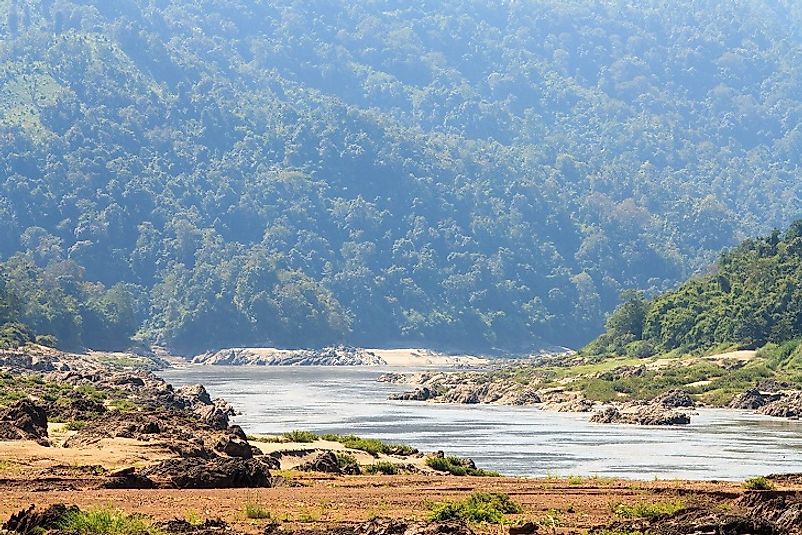The Nu River: Rare Untamed River Of South Asia

5. Description
Famous for its wild beauty, the Nu Chiang River, also known as the Salween River, flows through the three countries of China, Myanmar, and Thailand of South and Southeast Asia for a distance of around 2,400 kilometers before draining into the Andaman Sea at the Gulf of Martaban. The Nu River rises in the Qinghai Mountains of the Tibetan plateau at an elevation of 17,880 feet, from where it descends down, moving southwards through the Yunnan province of China. Soon it enters Myanmar where it flows through the rugged terrain of the Shan Plateau. Further down, the river enters Thailand forming a natural boundary between Thailand and Myanmar for a distance of about 130 kilometers before reentering Myanmar through the Karen and Mon State. The river soon exits the gorge, flowing slowly through the agricultural fields of Myanmar and finally forming a delta at Mawlamyaing where tributaries of the Salween enter the Andaman Sea.
4. Historical Role
The Nu River basin has been inhabited by indigenous people like the Nu, Tai, Shan, Karen, Shan, Mon and others since a long time. As the river passed through difficult terrain, often it served as a primary source of connection between remote villages located in the mountains and plateau throughout the course of the Salween. During the World War II, the Nu River witnessed a major battle between the Chinese forces and the Japanese forces who had occupied territory in Burma, blocking the trade route from India and Myanmar into China. The battle, known as the Burma Campaign, witnessed the death of both Chinese and Japanese soldiers in large numbers. During this war, the Nu was, for the first time, used to define the boundary between the countries of Thailand and Myanmar.
3. Modern Significance
Since the Nu River flows primarily through rugged terrain with dangerous rapids along its course, only small parts of the river is navigable by large water vessels. Small boats ply across the river in its upper courses carrying people and goods between remote villages in the region. In its lower course, however, the Nu is navigable for a short distance where it is used to transport teak logs from Myanmar's forests to the sea for processing and export. The Nu River also has immense potential for hydroelectric power production which, however, could have a huge adverse impact on the lives of people and wildlife in the Nu river basin. The locals of the region also depend on the river for fishing and agricultural practices.
2. Habitat and Biodiversity
The Nu River is one of the most pristine rivers of South Asia with habitat that is still quite wild and largely untouched by anthropogenic impacts. The Nu River hosts some of the rarest of species on Earth with 47 fish and amphibian species that are found nowhere else in the world. Other notable species of the Nu River basin include the vulnerable Asian small-clawed otter, the endangered fishing cat, the critically endangered Siamese crocodile, a great biodiversity of turtles species, and 143 fish and 92 amphibian species. Land animals inhabiting the forests around the river valley includes wild donkeys, wild ox, small panda, golden eye money and others.
1. Environmental Threats and Territorial Disputes
For long, China and other countries sharing the Nu River, have attempted to construct dams over the river. However, such steps threaten the lives of wildlife inhabiting the river. The construction of dams along the Nu River would also is predicted to lead to large-scale flooding of towns and villages along the river. Extensive damming of river would also result in decreasing the water force in its lower course triggering the entry of the sea water into the dry river mouth damaging the fertility of the agricultural land there. The dams would also impede the migration of fish species inhabiting the river. Thus, there have been several outcries by the locals and local governments inhabiting the Nu river valley in the past against such dam construction projects. However, the national governments of the countries appear to be determined to exploit the river for its hydroelectric potential with plans for large-scale damming of the river already being made.











